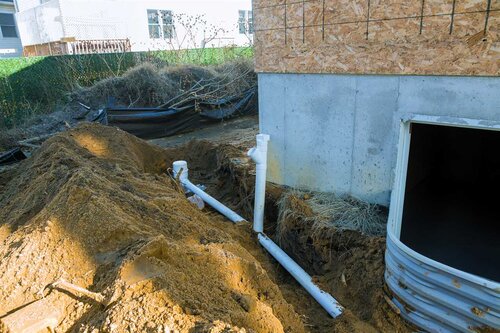How do you actually feel in relation to How Does the Plumbing Work in Your Home??

Plumbing is a vital element of any type of home, responsible for providing tidy water for drinking, cooking, and bathing, along with eliminating wastewater safely. Understanding the basics of home plumbing is necessary for every property owner to make certain appropriate upkeep, troubleshooting, and, if needed, repair services. In this newbie's overview, we'll cover the basic concepts of home plumbing to help you become more aware of exactly how it functions.
Water System
The supply of water system brings clean water right into your home from a municipal water source or a personal well. It contains a main water line that links to your home's plumbing system, usually situated underground. A water meter gauges the quantity of water taken in, while a shut-off shutoff enables you to manage the flow of water right into your home.
Plumbing Fixtures
Plumbing fixtures are gadgets that provide water to different parts of your home and include sinks, taps, commodes, showers, bath tubs, and home appliances such as dish washers and washing machines. Each fixture is linked to the water system system via pipelines and fittings and may have its shut-off shutoff for upkeep or emergency situations.
Water Heater
The water furnace is accountable for heating water for residential use, including bathing, food preparation, and cleansing. Typical types of hot water heater include tank-type hot water heater, tankless (on-demand) water heaters, and heatpump water heaters. The hot water heater is connected to the water system and delivers hot water to plumbing components as required.
Drainage System
The water drainage system removes wastewater from your home and brings it away to a sewer treatment facility or septic tank. It contains a network of pipelines, installations, and fixtures that carry wastewater from plumbing fixtures to the main drain line or septic tank. Appropriate drainage is important to prevent clogs, backups, and sewage leaks.
Air flow System
The air flow system aids preserve appropriate atmospheric pressure and protect against drain gases from entering your home. Vent pipelines, likewise known as vent heaps, prolong from plumbing fixtures to the roofing, permitting sewer gases to run away securely outside. Ventilation pipelines likewise allow air to go into the drainage system, promoting smooth wastewater circulation and avoiding suction or vacuum effects.
Typical Plumbing Devices
Having the right tools available is vital for performing fundamental plumbing repairs and maintenance tasks. Common plumbing tools consist of adjustable wrenches, monkey wrench, pliers, pipeline cutters, hacksaws, plungers, augers (or drain snakes), and Teflon tape. Having these devices conveniently available can assist you take on minor plumbing concerns efficiently.
Fundamental Plumbing Fixings
While some plumbing repair work might call for specialist help, numerous usual problems can be addressed with standard DIY methods. Understanding just how to repair a dripping tap, unclog a drain, replace a bathroom flapper, or fix a trickling showerhead can save you money and time on plumbing repair services.
Final thought
Comprehending the basics of home plumbing is important for every single home owner to maintain a risk-free, practical, and effective plumbing system. By acquainting on your own with the water supply system, plumbing components, water drainage system, ventilation system, common plumbing tools, and fundamental repair work, you can with confidence attend to minor plumbing problems and guarantee your home's plumbing system runs smoothly.
Understanding Basics of Home Plumbing System: A Beginner's Guide
The Main Components of Your Home Plumbing System
The Water Supply System
This system is responsible for transporting fresh water into your home. It usually has a main water line that splits into two branches: one directed towards cold water services and the other connected to a water heater for hot water. The pressure is key here; it ensures water reaches all parts of your house.
The Drainage System
Once water has been used, it becomes wastewater that needs to be removed from your home. This is where the drainage system comes into play. It includes all the pipes that carry wastewater and sewage away from your house to sewage treatment facilities or septic tanks.
The Vent System
The vent system prevents sewer gases from entering your home and helps maintain the pressure balance that allows wastewater to flow out properly. These vents usually exit through the roof of your house.
Water Heating System
For those who enjoy hot showers or using hot water for cleaning, the water heater is a crucial part of the plumbing system. It can be a tankless system, which heats water on demand, or a traditional water tank model.
Common Plumbing Problems and Basic Troubleshooting
Plumbing systems, while designed to be durable, can face issues like clogged drains, leaky faucets, or low water pressure. Here are some basic troubleshooting tips:
Clogged Drains
Use a plunger or a plumber's snake to try and dislodge whatever is blocking the drain. Regular cleaning can prevent clogs.
Leaky Faucets
Often caused by worn-out washers or gaskets, these can usually be replaced by someone with basic DIY skills.
Low Water Pressure
This might be due to sediment build-up in your fixtures or a leak somewhere in your water line. Cleaning out aerators or seeking a professional to detect leaks might be necessary.
Preventive Maintenance Tips
Maintaining your plumbing system is key to avoiding emergencies. Regularly check for leaks, avoid disposing of grease down the sink, and have your system inspected by a professional plumber at least once a year.

Do you really like reading about Plumbing Basics For Every Home: The HomeTriangle Guide? Write a remark below. We'd be delighted to see your insights about this write up. In hopes that you come back again before long. Are you aware of somebody else who is very much interested in the topic? Please feel free to promote it. Thank you for taking the time to read it.
Website